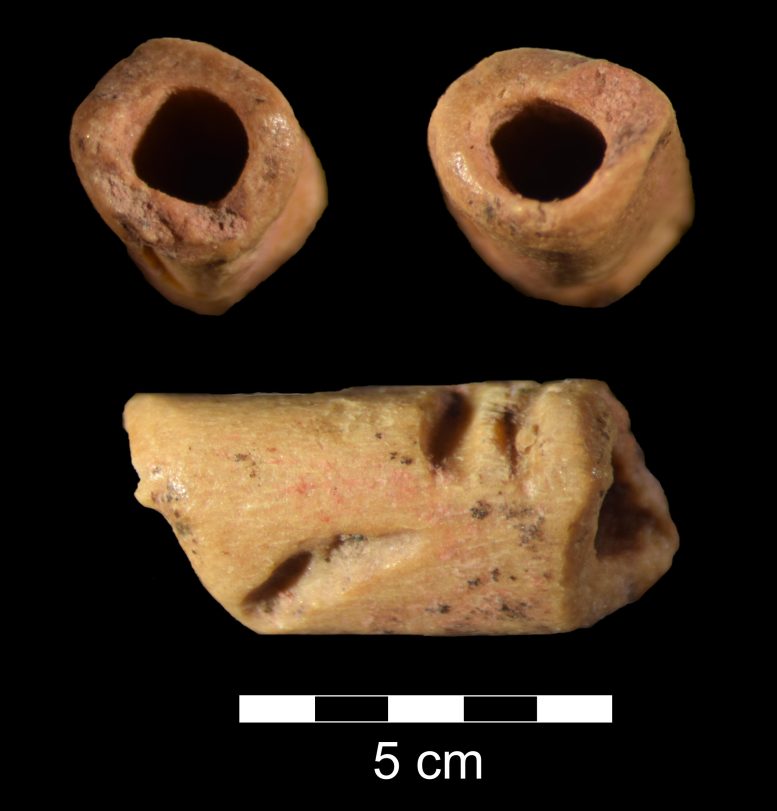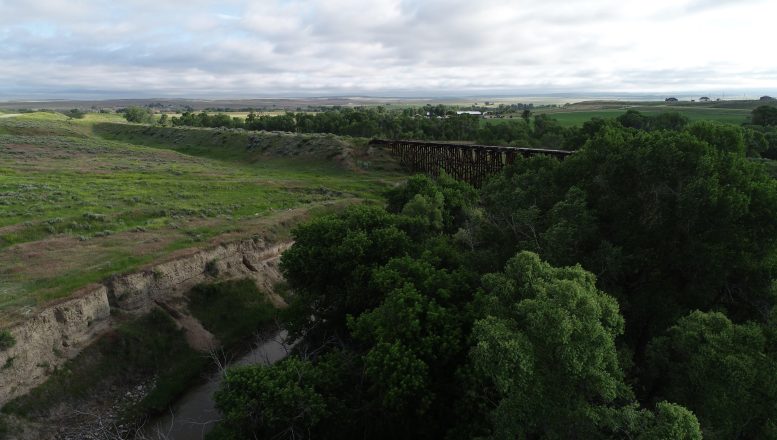
These images are of a tube-shaped bead made of bone that is about 12,940 years old. The bead was discovered at Wyoming’s La Prele Mammoth site by University of Wyoming archaeology Professor Todd Surovell and his research team. Credit: Todd Surovell
Professor Todd Surovell, an archaeologist at the University of Wyoming, along with his research team, uncovered a bone bead shaped like a tube, which is approximately 12,940 years old. This artifact, discovered at the La Prele Mammoth site in Converse County, represents the oldest bead ever found in the Americas.
Surovell’s research was published in the peer-reviewed journal Scientific Reports. Members of the research team included people from UW, the Office of the Wyoming State Archaeologist, the University of Manchester, Weber State University, and Chico State University.
Archaeological Context and Analysis
The La Prele Mammoth site preserves the remains of a killed or scavenged sub-adult Columbian mammoth and an associated camp occupied during the time the animal was butchered.
To determine the origin of the bone bead, the team extracted collagen for zooarchaeology by mass spectrometry, also known as ZooMS, which allowed the group to gain insights about the chemical composition of the bone
The researchers concluded that the bead was made from either a metapodial (the bones that link the phalanges of the digits to the more proximal bones of the limb) or a proximal phalanx (a bone found in the fingers and toes of humans and other vertebrates) of a hare.
This finding represents the first secure evidence for the use of hares during the Clovis period, which refers to a prehistoric era in North America, particularly prominent about 12,000 years ago. It’s named after the Clovis archaeological site in New Mexico, where distinctive stone tools were discovered.
Significance of the Find
The bead is about 7 millimeters in length, and its internal diameter averages 1.6 millimeters. The research team considered the possibility that the bead could have been the result of carnivore consumption and digestion and not created by humans; however, carnivores were not common on this site, and the artifact was recovered 1 meter from a dense scatter of other cultural materials.
Additionally, the grooves on the outside of the bead are consistent with creation by humans, either with stones or their teeth. Beads like this one were likely used to decorate their bodies or clothing.
Surovell, who also directs UW’s Frison Institute, is an archaeologist with a specialization in the Paleoindian period, the earliest period of American archaeology. He has worked primarily in the Great Plains and Rocky Mountains but also has field experience in Eurasia. He is interested in factors that structure the archaeological record from decision-making to site formation.
Reference: “Use of hare bone for the manufacture of a Clovis bead” by Todd A. Surovell, McKenna L. Litynski, Sarah A. Allaun, Michael Buckley, Todd A. Schoborg, Jack A. Govaerts, Matthew J. O’Brien, Spencer R. Pelton, Paul H. Sanders, Madeline E. Mackie and Robert L. Kelly, 5 February 2024, Scientific Reports.
DOI: 10.1038/s41598-024-53390-9










Be the first to comment on "12,940 Years Old – Archaeologists Discover Oldest Known Bead in the Americas"